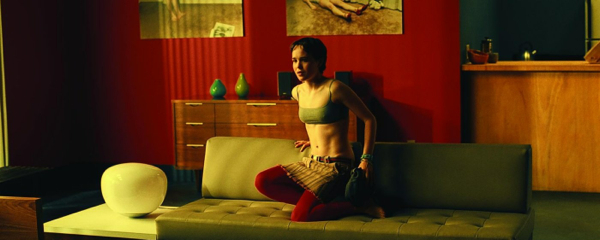Movie review by Greg Carlson
Despite two solid performances, “Hard Candy” is a thoroughly unlikable, nearly unwatchable exercise in unpleasantness. Presented initially as a thoughtful examination of online luring, the film rapidly disintegrates into a sensationalized cat-and-mouse shocker no different from dozens of equally empty-headed revenge scenarios. Positing a grisly “what if?” fantasy that turns the tables on the pedophiles who prowl chat rooms for gullible minors, “Hard Candy” fails largely because it asks the audience to spend its duration in close quarters with two completely awful human beings.
Ellen Page (currently on the big screen as Kitty Pryde in “X-Men: The Last Stand) plays Haley Stark, a bright 14-year-old who convinces flirtatious instant-message acquaintance Jeff Kohlver (Patrick Wilson) to meet in the real world. A blandly handsome fashion photographer, Jeff is instantly identifiable as a danger: a persuasively reassuring predator who knows exactly what to say to put young girls at ease around him. While the majority of “Hard Candy” is hermetically sealed – confined to Jeff’s ultramodern Hollywood Hills den – the movie’s fateful pair meet face to face in a coffee shop called, just a bit obviously, Nighthawks. Even in broad daylight, the presence of Haley and Jeff at Nighthawks triggers alarm bells for the viewer. This sequence, taut and well-written, hints at a much stronger film than the one that follows.
Haley ends up at Jeff’s house in a queasy tableau representative of every parent’s nightmare. Slurping screwdrivers under the watchful gaze of the much older man, Haley appears to struggle mightily to exude confidence and sophistication. Before Jeff can pounce, however, Haley is revealed as the uber-threat. She drugs the big bad wolf and secures him to a table. Once consciousness is regained, her grisly agenda takes center stage. Haley’s backpack contains some portentous elements, including surgical scalpels and a medical textbook detailing the procedure for castration.
At this point, “Hard Candy” begins its irreversible descent into rote cinematic exploitation. Director David Slade shoots too much of the material in close-up, a decision likely made to force the audience into close proximity with the characters. The result, however, is a dull repetition compounded by the movie’s primary interior setting. Slade never transcends the frustrating script by playwright Brian Nelson, and “Hard Candy” feels stage-bound when it should have a nimble sense of filmmaking to balance the two-person narrative.
Worse yet, Slade falls back on too many ineffective music video techniques that serve only to highlight the movie’s visual disjointedness. By the time the movie approaches its conclusion, an unnecessary explanation for Haley’s vengeance has trampled any intrigue and depth suggested by the film’s premise. Short of the coffee shop scene, Haley and Jeff don’t register as real people either, eliminating any opportunity for audience identification. Instead, they rear up like ghastly figments of the imagination. With its name-dropping references to Jean Seberg, Zadie Smith, and Roman Polanski, “Hard Candy” wants to be taken more seriously than it deserves to be. Once the film reaches an improbable climax (a hilariously awful exercise in crosscutting that would make D.W. Griffith blush), viewers will only feel a sense of relief that it is over.
